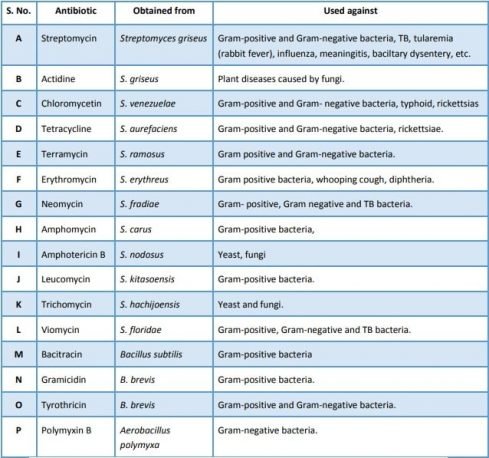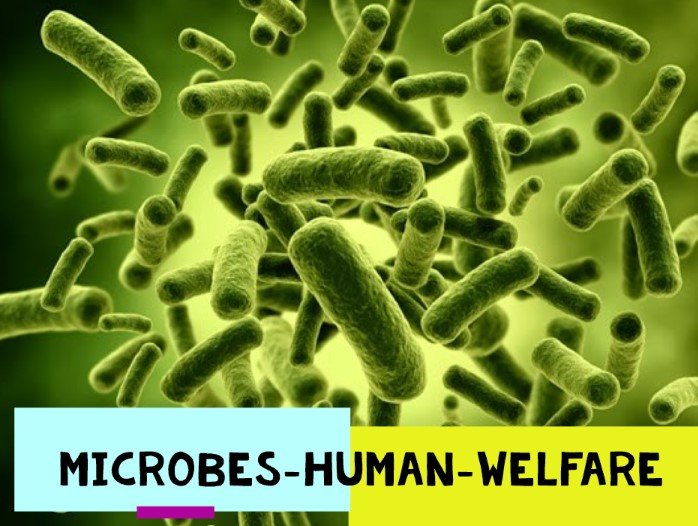Microbes In Human Welfare Notes For Class 12 NEET
Bacteria
(1) Study of bacteria is called bacteriology.
(2) Linnaeous placed them under genus vermes.
(3) Nageli classified bacteria under schizomycetes.
(4) Bacteria are unicellular, microscopic organisms.
(5) These are the smallest cell wall having prokaryotic cell.
(6) They differ from animals in having a rigid cell wall and being capable to synthesize vitamins.

Size:
(i) Bacteria are the smallest of all known cellular organisms which are visible only with the aid of microscope.
(ii) They are 3 to 5 microns (1 m = 1/1000 millimetre or about 1/25,000 inch) in length.
(iii) A few species of bacteria are approximately 15m in diameter.
Shape:
(i) The shape bacteria usually remain constant.
(ii) Some of them are able to change their shape and size with changes in environmental conditions.
Such bacteria, which change their shape, are called pleomorphic.
(e) Filament: The body of bacterium is filamentous like a fungal mycelia. The filaments are very small e.g.Beggiota, Thiothrix etc.
(f) Stalked: The body of bacterium posses a stalk e.g. Caulobacter.
(g) Budded: The body of bacterium is swollen at places e.g. Retrodomicrobiom.
Role of Bacteria in nitrogen cycle:
Nitrogen cycle existing in nature, comprises of –
Nitrogen fixation:
(1) Many free-living soil inhabiting bacteria such as, Azotobacter (aerobic), Clostridium (anaerobic), etc. have ability to fix atmospheric nitrogen into ammonia.
(2) The other group of nitrogen fixing bacteria lives in symbiotic association with other plants.
(3) The most important symbiotic nitrogen fixing bacteria is Rhizobium spp.
(4) The various species of Rhizobium inhabit different leguminous plants. For example, R. leguminosarium infects soyabeans, etc.
(5) They develop root nodules and fix atmospheric nitrogen into ammonia in symbiotic association with leguminous plants.
(6) The fixed nitrogen is partly taken up by the leguminous plants and metabolised.
(7) A part of fixed nitrogen is diffused out into the surrounding soil.
Ammonification:
(1) The nitrogenous compounds of the dead remains of plants, animals and their excretory products are decomposed into ammonia by a number of bacteria and other microorganisms.
(2) The conversion of nitrogenous organic compounds into ammonia is termed as ammonification.
(3) It is carried by many ammonifying bacteria such as Bacillus ramosus, B. vulgaris, B. mycoides, etc.
Nitrification:
(1) Many bacteria enhance the nitrogen fertility of soil by converting ammonium compounds to nitrites (e.g., Nitrosomonas) and nitrites into nitrates (e.g., Nitrobacter).
(2) The Nitrosomonas group oxidizes ammonia into nitrite –
NH+4 + 3/2O2 —–> NO–2 + H2O + H+ + Energy↑
(3) The Nitrobacter group oxidizes nitrite to nitrates –
NH–2 + 1/2O2 —–> NO–3+ Energy↑
Denitrification:
The nitrates and ammonia are converted to nitrous oxide and finally to nitrogen gas by several denitrifying bacteria, e.g., Pseudomonas fluorescence, P. denitrificans, Bacillus subtilis, Thiobacillus denitirficans, etc.
Useful activities
(i) Decay of organic wastes
(ii) Role in improving soil fertility
(a) Humus: The microbial decomposition of organic matter and mineralization results in the formation of complex amorphous substance called humus. The humus improves the aeration, water holding capacity, solubility of soil minerals, oxidation-reduction potential and buffering capacity of the soil.
(b) Composting: It is conversion of farm refuse, dung and other organic wastes into manure by the activity of saprotrophic bacteria (e.g., Bacillus stearothermophilus, Clostridium
thermocellum, Thermomonospora spp, etc.)
(c) Adding sulphates: A few sulphur bacteria (e.g., Beggiatoa) add sulphur into the soil by converting H2S into sulphates.
(iii) Sewage, disposal: Ability of anaerobic bacteria to purify the organic matter is used in the the sewage disposal system of cities. The faeces are stored in covered reservoirs and allowed t purify.. The common bacteria involved in sewage disposal are –Coliforms (E. coli), Streptococci, Clostridium, Micrococcus, Proteus, Pseudomonas, Lactobacillus, etc.
(iv) Role in Industry:
(a) Lactic acid.
(b) Curd
(c) Cheese
(d) Butter
(e) Retting process
(f) Vinegar
(v) Role of bacteria in human being
(vi) Medicinal uses
(a) Vitamins
(b) Serum and vaccines
(c) Enzymes.
(d) Antibiotics
List of some common antibiotics, their sources and their applications

Microbes in production of biogas
Methanogens:
These are strict anaerobic bacteria and mainly occur in muddy areas and also in stomach of cattle, where cellulose is fermented by microbes. These are responsible for methane gas (CH4 ) formation in bio-gas plants, because they have capacity to produce CH4 from CO2 or formic acid (HCOOH).


















